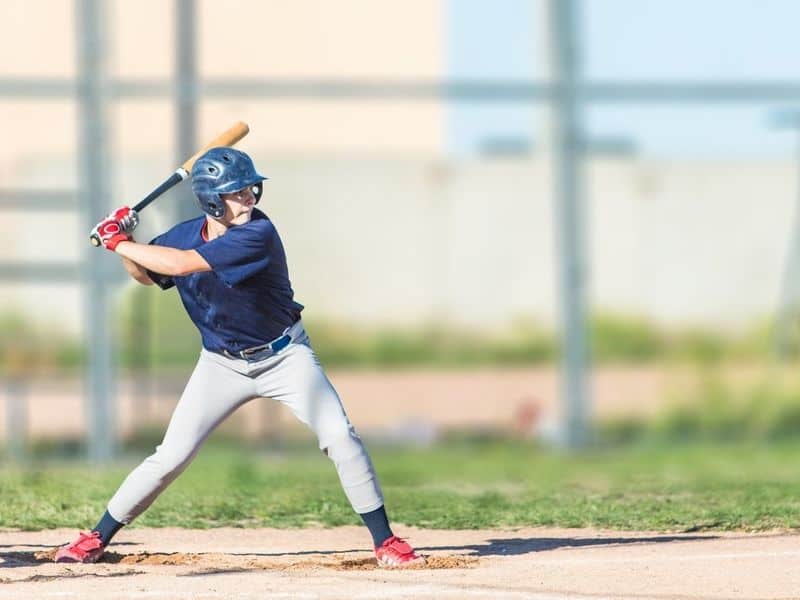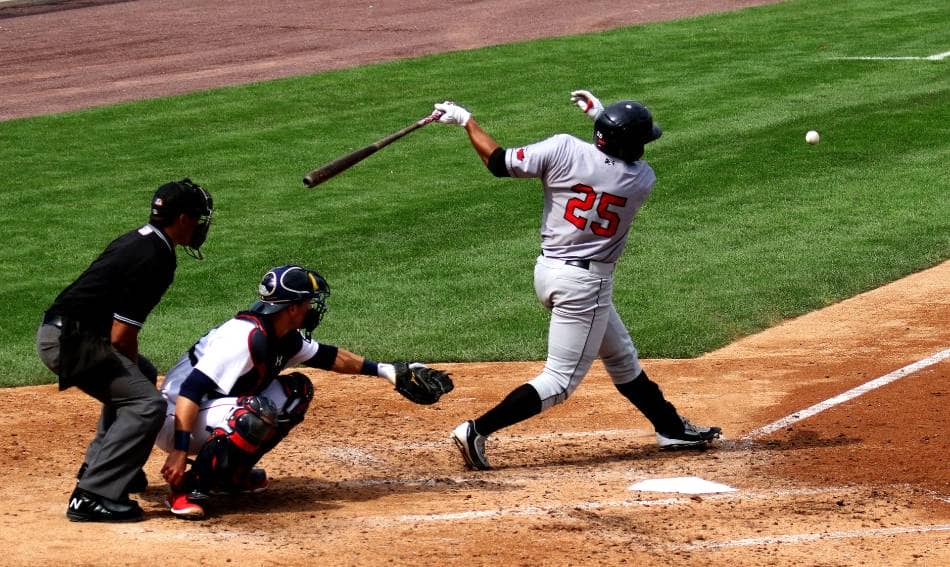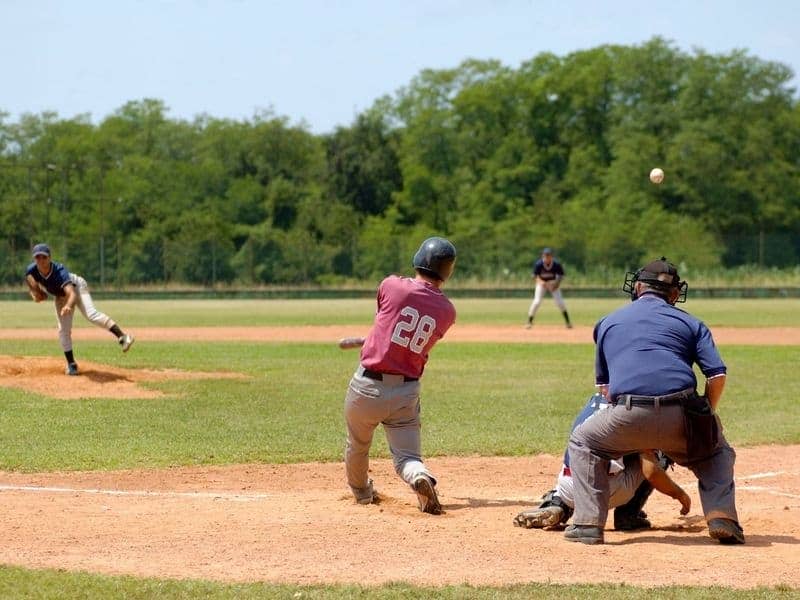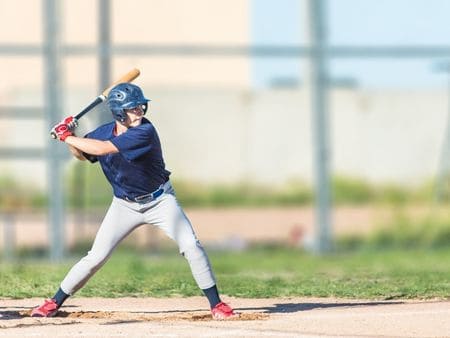
If you have watched much baseball, you’ve certainly seen it happen at some point: a batter swings and connects with a pitch, but the ball doesn’t really go anywhere.
The ball winds up somewhere out of play, and nothing happens on the field. You may have even gone to a game and come home with the result of this: a foul ball.
So, what exactly is a foul ball?
A foul ball is a ball that is hit outside the first and third base foul lines that counts as a strike against the batter. Most foul balls allow batters to prolong at-bats, but a batter can be retired on a foul ball. Batters cannot reach base on foul balls and runners typically cannot advance either.
Foul balls come in all sorts of shapes and sizes, but the result is almost always the same; the batter’s at-bat continues with a strike added, and everyone resets and does it again.
However, there is quite a bit more to it than that. So let’s dive in.
Fair and Foul Balls in Baseball
Just like virtually every other sport, baseball has boundaries set both by rules and physical barriers. While fencing is the natural boundary of the field of play, there are two foul lines that meet at home plate and run perpendicular (90-degree angle) to each other to the outfield fence.
These lines decide whether a batted ball is a fair ball or a foul ball.
The existence of the foul ball was established by the original rules of baseball published by Alexander Cartwright. Namely, it declared, “a ball knocked out of the field, or outside the range of the first and third base, is foul,” though there is no known reason why the rule was instituted.
While no one knows exactly why Cartwright included the rule, in retrospect it makes sense that the rule effectively dictated the baseball field as one quadrant of a circle.
After all, current MLB stadiums have between 105,000 and 119,200 square feet (or between 2.4 and 2.72 acres) of fair territory, which is enough territory for nine defenders to cover.
When Is a Ball Foul in Baseball?

On the surface, it seems rather simple: a ball landing in the 90-degree wedge of fair territory is a fair ball and anything that lands anywhere else is a foul ball. Simplistically, that is true, but there’s a little more to it.
Different rules apply differently for balls hit in the infield and the outfield. In the outfield, a ball is fair or foul based on where it lands. In the infield, that factor is determined by where the ball is when touched or where a ground ball is when it passes either first or third base.
The simplest rules are balls hit beyond the infield. Any ball that takes its first bounce on or inside either foul line is considered fair. In this case, even if a ball rolls into foul territory, as long as it first hits the ground in fair territory, then it is a fair ball.
On the other hand, if a ball to the outfield first lands in foul territory, then rolls into fair territory, it is still a foul ball.
Furthermore, where the foul lines meet the outfield fence, there are foul poles. Any ball that hits the foul pole is a fair ball. A ball that hits the foul pole without bouncing is a home run and a ball that bounces and then hits the foul pole is a ground-rule double.
Home runs offer a slight exception to the rule about balls having to land in fair territory. Any ball that passes the foul pole in fair territory and lands in foul territory (therefore curling around the pole) is a home run.
Within the infield, the rules are a little more complicated. Due to the natural spin of a baseball hitting a bat, many batted balls don’t travel in a straight line.
In other words, it is common for a batted ball to land in fair territory but roll foul. If a ball rolls into foul territory before reaching either first or third base, the ball is foul.
One difference between foul balls in the infield and the outfield is that in the outfield, a ball is officially fair or foul when the ball hits the ground. In the infield, meanwhile, the fate of a fair or foul ball isn’t determined until the ball either comes to a stop or is touched by someone, usually a fielder.
It is common for a ball to start fair, then spin foul, but occasionally, a ball will start foul but will either hit an object (such as a tuft of grass or a rock) and spin back into fair territory.
Either case, the sole deciding factor on fair or foul is the location of the ball when it stops or is touched, regardless of where the final bounce took place.
One other area to note is around first and third base. Both of these bases are situated directly next to the foul lines, but entirely in fair territory. Therefore, any ball that hits the base is fair.
Additionally, a ground ball (i.e. bounces before reaching the base) that passes directly over any portion of the base is considered fair. Anything that takes the first bounce past either first or third base is subject to the outfield rules.
The area around the batter’s box can be a little tricky as well. The foul lines technically don’t meet at home plate, but instead, end at the top edge of the batter’s box a few feet from home plate.
However, the boundaries of the foul lines are enforced as if they extend to home plate.
As the rules go, a batted ball that hits a batter while he is in the batter’s box is always foul, regardless of where in the box he is.
However, if a ball is fielded within the batter’s box, is not touched by the batter, and is judged by the home plate umpire to be within the area that would be inside the foul lines, the ball is fair.
Any ball fielded on top of home plate is a fair ball as well.
What Happens on a Foul Ball in Baseball?

As we mentioned earlier, there are a few different outcomes on a foul ball that can vary slightly. What does not vary is that a batter cannot reach base and a batter is not out for merely hitting a foul ball.
On a foul ball that is not caught, a strike is assessed to the batter, unless there are already two strikes on him, in which the at-bat continues. However, if a batter hits a fly ball that is caught in foul territory, then he is out. Any runner(s) may try to advance on a foul ball out at their own risk.
In addition to fair territory, all baseball fields feature foul territory that is in-play, allowing for foul fly outs, though that territory is considerably smaller.
MLB ballparks contain between 18,100 and 40,700 square feet of foul territory, compared to over 100,000 square feet in fair territory, so with less room (and fewer opportunities), there are usually rather few foul outs per game.
A batter cannot be retired just by fouling off a pitch, meaning that a skillful batter can extend at-bats tremendously by being able to foul off tough pitches. There is one exception to this rule, however.
If a batter attempts to lay down a bunt with two strikes but bunts it foul, then he is out and the out is considered a strikeout.
Because a bunt makes it easier to direct a ball in a certain direction, bunting a ball foul with two strikes is prohibited to prevent batters from purposely bunting pitches foul just to tire out a pitcher.
That was a common practice in the early days of baseball, which led to the 1901 rule that allowed the first two strikes to come via a foul ball, a rule that has remained unchanged today.
However, the stipulation that an “intentional foul hit” (i.e. a foul bunt) with two strikes was prohibited and results in a third strike.
As also stated, foul balls can land both in and out of the field of play. As a result, any ball hit in the air that a fielder can catch within the field of play is an out.
A foul ball that goes over a fence is out of play. At the college and professional level, a foul ball becomes a souvenir for the lucky fan that makes the play!
How Often Do Foul Balls Occur in Baseball?
Foul balls are a very common occurrence at baseball games since they are often the result of a hitter being unable to completely square up a pitch.
In 2019, there were 466,808 strikes thrown in Major League Baseball, with 28.2% of them being foul balls, equating to over 131,000 foul balls over the season. Per game, that equates to a little over 54 foul balls.
Some of these foul balls remain in play, though it’s a comparatively small number, with 3,355 foul outs occurring in 2019, or 1.38 foul outs per game.
In other words, whenever a hitter sends a ball foul, you better watch out, because that ball is much more likely to become a souvenir than an out.
So the next time you are at a baseball game, keep an eye out for foul balls because there are bound to be a lot of them.
Related Articles
- What Is a Walk-Off in Baseball?
- What Is the Strike Zone in Baseball? A Thorough Explanation
- What Is Slugging Percentage in Baseball?
- What Is the Infield Fly Rule?
- What Is a Full Count in Baseball?
- What Is a Designated Hitter in Baseball?
- The Ultimate Guide to Batting Average in Baseball
- What Is a Pinch Hitter in Baseball? A Rules and Usage Guide
- The Ultimate Resource on Hits in Baseball (1B, 2B, 3B, HR)
- What Is OPS in Baseball? Well, It Measures…
